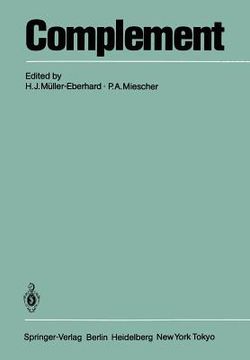Share
complement
H. J. Müller-Eberhard
(Illustrated by)
·
P. a. Miescher
(Illustrated by)
·
Springer
· Paperback
complement - Müller-Eberhard, H. J. ; Miescher, P. a.
Choose the list to add your product or create one New List
✓ Product added successfully to the Wishlist.
Go to My Wishlists
Origin: U.S.A.
(Import costs included in the price)
It will be shipped from our warehouse between
Thursday, June 13 and
Monday, July 01.
You will receive it anywhere in United Kingdom between 1 and 3 business days after shipment.
Synopsis "complement"
Activation of the complement system gives rise to a number of molecular species which can interact with host-derived cells and regulate their function. This interaction is mediated through distinct cell surface complement receptors, and receptor engagement produces biologic responses which can either modulate host defense reactions or enhance inflammation. Although the first complement receptor was recognized more than 30 years ago [80J, detailed biochemical information concerning the receptors has only recently become available. Currently, eight distinct complement receptors are recognized. Five receptors (CRl, CR2, CR3, C3a receptor, and C3e receptor) react with various regions on C3 while the other receptors display specificity for Clq, C5a, or Factor H. This chapter focusses on the chemistry of the various ligands and receptors and discusses the biologic activities which arise as a result of receptor-ligand interaction. II. CIQ Receptor A. The Ligand Clq is the recognition molecule of the classical complement pathway [reviewed in 20, 130]. In serum, it is part of a calcium-dependent penta molecular complex containing one molecule ofClq and two molecules each of the pro enzymes Clr and CIs. During classical pathway activation, the macromolecular complex becomes associated with the activator through the Clq subcomponent. Bound Clq undergoes a conformational change and induces the proteolytic autoactivation of Clr which in turn effects the proteolytic activation of CIs. This process is controlled by the Cl inhibitor (ClINH) which binds irreversibly to activated Clr and CIs, and inhibits their enzymatic activities.
- 0% (0)
- 0% (0)
- 0% (0)
- 0% (0)
- 0% (0)
All books in our catalog are Original.
The book is written in English.
The binding of this edition is Paperback.
✓ Producto agregado correctamente al carro, Ir a Pagar.

